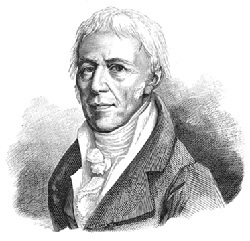|
TRANSLATE THIS ARTICLE
Integral World: Exploring Theories of Everything
An independent forum for a critical discussion of the integral philosophy of Ken Wilber
 David Christopher Lane, Ph.D.
Professor of Philosophy, Mt. San Antonio College Lecturer in Religious Studies, California State University, Long Beach Author of Exposing Cults: When the Skeptical Mind Confronts the Mystical (New York and London: Garland Publishers, 1994) and The Radhasoami Tradition: A Critical History of Guru Succession (New York and London: Garland Publishers, 1992). David Christopher Lane, Ph.D.
Professor of Philosophy, Mt. San Antonio College Lecturer in Religious Studies, California State University, Long Beach Author of Exposing Cults: When the Skeptical Mind Confronts the Mystical (New York and London: Garland Publishers, 1994) and The Radhasoami Tradition: A Critical History of Guru Succession (New York and London: Garland Publishers, 1992).If there's a singular topic Integral students need to be educated on it is evolutionary theory, given their frequent but uninformed use of the term "evolution". These short biographical chapters about evolutionary theorists have been written by different philosophy students of professor David Christopher Lane. (FV)
THE EVOLUTIONARY SCIENTISTS
Glimpses into the Life and Work of Great Thinkers in Evolutionary Biology
Coyne|
Crick|
Darwin|
Dawkins|
Diamond|
Dobzhansky|
Eldridge|
Gould|
Haldane|
Hamilton |
Lamarck|
Lovelock|
Mayr|
Mendel|
Monod|
Spencer|
Trivers |
Wallace |
Weismann |
Williams |
E.O. Wilson
Jean-Baptiste LamarckGavin LeeJean-Baptiste Lamarck was born as the youngest son to a family of 11 on August 1, 1744. While spending most of his youth in a Jesuit seminary where he was being groomed to become a priest, Lamarck received the unfortunate news of his father's passing. In 1761, a time of unrest, Lamarck decided to abandon his Catholic training to serve his role as a soldier in the French army against Germany; it was during his first battle, which he displayed acts of bravery and was quickly promoted to the position of an officer. Lamarck continued to serve garrison duty in the south of France until his accidental injury forced him to leave the army. Shortly after his departure, he found work as a bank clerk giving him the appropriate amount of time he needed to become an expert in both botany and medicine. His first book was published in 1778, Flore Française, which provided a means of identifying and distinguishing plant identifications through dichotomous keys; the book was published with the help of Buffon and provided him the recognition he needed to later become appointed as an assistant botanist at the royal botanical garden. While his contributions to the scientific community were already significant by this point, it was just the start of his career; as Lamarck's career grew, he introduced ideas that would revolutionize the very foundation of the scientific community.  Jean-Baptiste Lamarck Despite being a leading expert as an evolutionist during his time, Lamarck's work as a zoologist wasn't widely appreciated. Over time, Lamarck obtained a position at Jardin des Plantes and later he became a professor at the Muséum national d'Histoire naturelles. The Musée National d'Histoire Naturelle was a reorganized Jardin des Plantes and Lamarck who promoted the change was rewarded with the position of an insects and worms professorship. Although Lamarck had no prior background on the subject matter and that department of science being relatively new, he remained adamant about furthering whatever field he was in pursuit. Lamarck would release, Système des Animaux sans Vertèbres, a book which explained the distinctions between invertebrates and vertebrates for the first time while he was still a professor. Lamarck was a pioneer not only in his field as a botanist, but also as a zoologist; Histoire naturelle des Animaux sans vertèbres, describes his method of identifying species under different categories aside from the general term of “Insecta.” Through the specific categorizing of organisms, Lamarck's method of identification introduced the possibility of organization in a rather chaotic field. Lamarck's works were only able to create these revelations because of the rigorous analyzing and unorthodox methods he relied on during his research. Unfortunately, some geniuses aren't appreciated during their time; as a result, Lamarck continued to struggle through poverty even as a professor. Lamarck's greatest contributions towards the advancement of science were without a doubt his ideas on evolution or better known as “Lamarckism”. Published in 1809, Philosophie zoologique, discussed a theory of evolution which described the idea of eternal life in a sense. Lamarckism was the idea that nothing ever went extinct, but instead, they changed into different species; ultimately, these species would reach a stage of perfection, which Lamarck believed to be humans. Lamarck explained it as changing from simple to more complex forms over time and for the first time formally introducing the idea of creating new species. While some of the core ideas in Lamarckism were wrong, others were influential and similar to those of Charles Darwin's theory of evolution such as: inherited characteristics and environmental effects on organisms. The first law of Lamarckism was explaining how the constant use or disuse of structures would explain their gradual shrinking or growing. Lamarck believed that environmental changes forced an organism to change and as a result, they would have behavioral changes as well. These behavioral changes would modify the species and these “improvements” would then be passed through offsprings. The second law of Lamarckism explains how all these “improvements” are heritable and why they pass on from one generation to the next. Over time, such enhancements would appear in most organisms due to the fact that species with this “improvement” have a greater survival rate; thus, organs, which weren't used by these superiorly genetically altered species would gradually shrink or disappear. Lamarck argued that organisms would always survive because they would adjust themselves based on whatever changes occur in the environment and become closer to being “perfect.” Lamarck attempts to support his beliefs by using giraffes as an example. Lamarck describes how throughout a giraffe's life, the constant use or disuse of its neck, would make the growth or shrinking a heritable trait. While this theory has now been disproven, the idea that an organism's life experiences can become hereditary and possibly affect another generation is interesting. It's fascinating that Lamarck's greatest contributions towards society weren't his actions as an officer in the war, but instead as a scientist. His unparalleled ability to correctly identify and classify organisms were what made him stand out among other evolutionists. However, his unwavering passion for the advancement of societal knowledge is what made him a legend. Lamarck was a man who utilized his experience and expertise in various scientific fields to formulate the conclusion that evolution was formed through inherited characteristics. While his findings were incorrect in some aspects, his core idea of how environmental changes affect species structures embodied the main ideas of Darwin's evolutionary theory. Lamarck never received the recognition he deserved during his time; however, that wasn't what made this evolutionist so amazing. It was the fact that despite battling poverty throughout his entire life, he was able to further societal knowledge of various scientific fields. Lamarck's work would always be disregarded until the day he died, but he never let that affect him. Neither his lack of recognition in the scientific community or economic status was enough to stop Lamarck's contributions. Lamarck began losing his eyesight in 1818 and died completely blind on December 28, 1829. Despite all that Lamarck had contributed, he was given a poor man's funeral and after five years his body was excumentated. Lamarck's remains are now lost in time. However, the memory of a man who contributed his whole life towards modernizing science will never be forgotten. Especially, since his ideas and evidence on evolution were essential to Darwin's “Survival of the fittest.” Further Reading1. Zoological Philosophy, 1809. 2. Histoire naturelle des animaux sans vertèbres, 1815-1822. (7vols.) 3. Lamarck's Open Mind, High Sierra Books (April 1, 2004)
MSAC Philosophy Group
The theory of evolution has a long history. However, it was not until Charles Darwin and Alfred Russel Wallace discovered that the wide variety of species we presently see were largely the result of natural selection did evolutionary studies have a solid, scientific basis. In the past one hundred and sixty years, a number of eminent biologists have contributed to our understanding of how complex life forms emerged from simpler, more rudimentary ones.
Comment Form is loading comments...
|